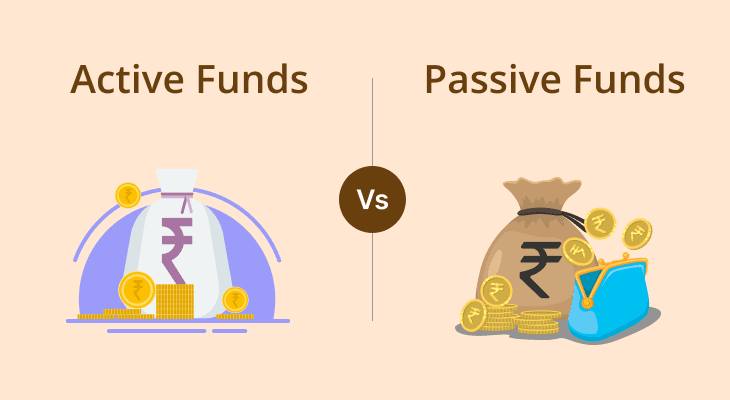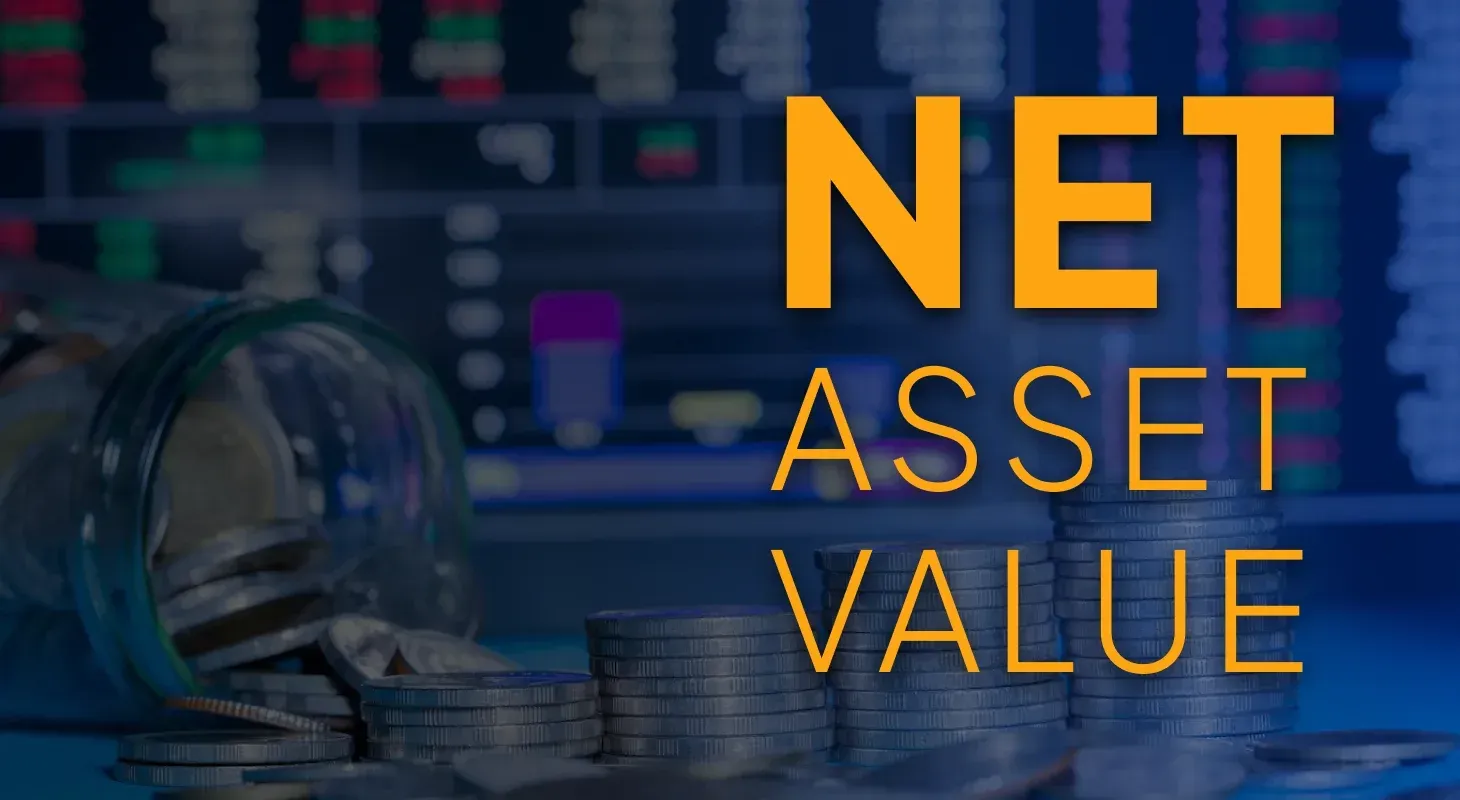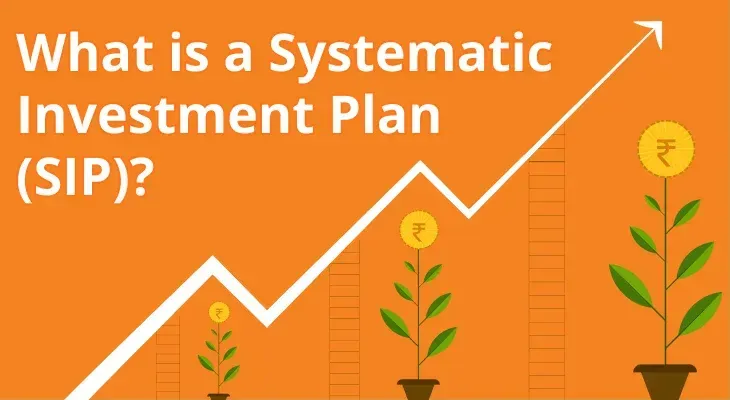
What is the Difference Between Active & Passive Funds?
Investors often face the choice between active and passive mutual funds, each with distinct investment strategies, costs, and risks. While active funds aim to outperform the market through expert management, passive funds track a market index, offering lower costs and more stable returns.
Understanding the difference between active and passive funds is crucial for aligning your investment strategy with your financial goals. Let’s explore how they work, their benefits, risks, and which type suits your needs.
Overview of Active Funds & Passive Funds
Understanding the fundamental characteristics of active funds and passive funds is essential before making an investment decision.
What Are Active Mutual Funds?
Active mutual funds are investment funds managed by professional fund managers who actively buy, sell, and adjust their portfolio holdings to outperform a specific market index. The fund manager’s role is to analyze market trends, research companies, and identify high-growth opportunities to generate better-than-market returns.
Key Characteristics of Active Mutual Funds
- Fund Manager-driven Strategy:
- Fund managers and research teams continuously monitor the financial markets and economic indicators to identify promising investment opportunities.
- Decisions are based on fundamental analysis, technical analysis, and macroeconomic trends.
- Objective – Outperform the Market:
- The primary goal is to beat the benchmark index, such as Nifty 50 or BSE Sensex, through strategic stock selection and active trading.
- Success depends on fund managers’ expertise, research capabilities, and decision-making skills.
- Frequent Portfolio Adjustments:
- Holdings are regularly bought and sold to capitalise on short-term opportunities and mitigate potential losses.
- The fund’s composition may change dynamically based on market trends and economic shifts.
- Higher Costs Due to Active Management:
- Since active funds require extensive research and frequent trading, they typically have higher expense ratios.
- Fees include fund management charges, research expenses, brokerage fees, and trading costs.
- Higher Risk, Higher Reward:
- Active funds have greater market volatility because of their dynamic trading strategies.
- They can generate higher returns but also carry a higher risk of underperformance if investment decisions do not work as expected.
- Diverse Investment Approaches:
- Fund managers may follow different strategies, such as growth investing, value investing, or sector-based investing.
- Some funds may focus on large-cap, mid-cap, or small-cap stocks, while others may invest in multiple asset classes (equity, debt, commodities)
What Are Passive Mutual Funds?
Passive mutual funds, commonly referred to as index funds or exchange-traded funds (ETFs), are designed to track a specific market index rather than trying to outperform it. The portfolio consists of the same stocks or securities that make up the index, and changes are made only when the index composition changes.
Key Characteristics of Passive Mutual Funds
- Index-Tracking Strategy:
- This type of mutual fund passively replicates the composition and performance of a market index, such as Nifty 50, or BSE Sensex.
- The goal is not to beat the market but to deliver returns that closely mirror the index.
- Minimal Human Intervention:
- Unlike active funds, passive funds do not involve frequent buying and selling of securities.
- The portfolio is automatically adjusted based on changes in the index, requiring little to no manual intervention.
- Lower Costs & Expense Ratios:
- Since passive funds do not require extensive research or active management, they have significantly lower expense ratios (0.1% to 0.5%) compared to active funds (1% to 2%).
- Fewer trading transactions mean lower brokerage and transaction costs.
- Benchmark-linked Returns:
- Passive funds offer steady, market-linked returns with minimal volatility akin to that seen in the benchmark index it is tracking.
- There is no reliance on a fund manager’s skill, making the returns linked to the movement of the index.
- Lower Risk Compared to Active Funds:
- Because passive funds spread investments across an entire index, they are naturally diversified, reducing exposure to individual stock risks.
- They are less susceptible to mismanagement or human error since they follow a predefined structure.
- Popular Investment Options:
Some of the most well-known passive investment vehicles include index funds, exchange-traded funds (ETFs), and fund of funds (FoFs).
Key Differences Between Active and Passive Funds
Now that you know what active and passive mutual funds are, here’s a list of their key differences to help you easily compare between the two:
Aspect | Active Funds | Passive Funds |
Management | Actively managed by professional fund managers | Tracks an index |
Objective | To outperform the benchmark index | Track the underlying market index |
Cost | Higher expense ratio due to frequent trading | Lower expense ratio |
Risk Level | Higher risk due to active trading decisions | Lower risk due to broad market exposure |
Returns | Can be higher than the market (but not guaranteed) | Matches market returns |
Performance Comparison
- Active Funds: Can deliver higher returns in a well-performing market, but success depends on the fund manager’s expertise.
- Passive Funds: Tend to provide stable but moderate returns as its portfolio mirrors an index’s, hence the returns are closer to the underlying stocks subject to tracking error.
- Long-Term Perspective: Over longer periods, many active funds struggle to outperform passive funds due to market fluctuations and higher fund management costs.
Cost Differences
- Active Funds: Have higher expense ratios (typically 1%-2%) due to fund management fees, research costs, and trading expenses.
- Passive Funds: Have lower expense ratios (typically 0.1%-0.5%) because they require minimal management.
Why Does Cost Matter?
Even a small difference in expense ratios can impact long-term returns. Over 20 years, higher fees can eat into profits, making passive funds a cost-effective choice for long-term investors.
Risk Considerations
When choosing between active funds and passive funds, understanding the risks involved is crucial. Each type of fund carries different levels of risk based on management style, market exposure, and volatility.
Risk Factors in Active Funds
- Market Risk: Active funds are subject to market fluctuations, and poor investment decisions can lead to underperformance against the market or against the scheme’s benchmark index.
- Fund Manager Risk: The fund's success depends on the fund manager’s ability to pick winning stocks and adjust the portfolio correctly. Poor judgment or market misinterpretation can negatively impact returns.
- Higher Volatility: Since active funds often invest in high-growth or undervalued stocks, they can experience higher short-term volatility.
- Expense Risk: Higher management fees and transaction costs can erode returns, especially if the fund fails to outperform the market.
- Sector and Stock-specific Risks: Actively managed funds may concentrate investments in specific sectors or stocks, increasing exposure to sector downturns.
Risk Factors in Passive Funds
- Market Risk: Since passive funds track an index, they are fully exposed to market downturns and cannot protect against losses.
- Tracking Error: Some passive funds may not perfectly replicate the index, leading to small deviations in returns, known as tracking error.
- Limited Flexibility: Passive funds cannot adjust to changing market conditions, missing opportunities to capitalise on short-term gains or avoid losses.
- Lower Potential Returns: As passive funds do not aim to outperform the market, they may deliver lower returns compared to well-performing active funds.
Ideal Investors for Active Funds
Active funds are suitable for investors who:
- Want higher returns when compared to the market’s benchmark index.
- Are comfortable with higher risk and volatility.
- Trust fund managers' expertise in picking winning stocks.
- Don’t mind paying a higher expense ratio on their investments.
- Have a short- to medium-term investment horizon.
Ideal Investors for Passive Funds
Passive funds are ideal for investors who:
- Prefer low-cost and low-maintenance investments.
- Don’t mind if their investments give returns which are closer to the market’s benchmarj index.
- Do not want to rely on fund managers' decisions, leading to fund manager risk.
- Value diversification and broad market exposure.
Conclusion
The difference between active and passive funds lies in their management, costs, and risk levels. Active funds can offer potentially higher returns but come with greater risks and costs. Passive funds, on the other hand, provide low-cost stability by following an index.
Choosing between passive funds vs active funds depends on your financial goals, risk appetite, and investment strategy. For long-term investors, passive funds often provide reliable growth, while active funds suit those seeking market outperformance. Assess your risk tolerance and investment horizon before making a decision.
FAQ
What is the main difference between active and passive funds?
Active funds are managed by professionals who make investment decisions to beat the market, while passive funds track an index and aim to replicate its performance.
Which type of fund has lower costs, active or passive?
Passive funds generally have lower costs because they follow an index and require minimal management, whereas active funds involve frequent trading and higher management fees.
Are active funds always better than passive funds?
Not necessarily. While active funds aim to outperform the market, they carry higher risk and fees. Passive funds have lower costs and aim to track market returns, and not generate alpha.
Which type of fund is better for long-term investing?
Both can be suitable. Passive funds offer low-cost market exposure over time, while active funds may generate higher returns if they are well-managed but come with higher risk.
Do passive funds carry any risks?
Yes, passive funds are still exposed to market downturns, tracking errors, and limited flexibility as they cannot adjust holdings based on changing conditions.
Can active funds guarantee better returns?
No. While active funds strive to outperform the market, success depends on fund management. Many fail to consistently beat their benchmark after accounting for fees.
Who should invest in passive funds?
Passive funds are ideal for investors looking for low-cost, long-term growth without actively managing their portfolio or taking on higher risk.
Why do active funds have higher fees?
Active funds require constant research, stock selection, and portfolio adjustments, leading to higher management and transaction costs compared to passive funds.
Are active funds more volatile than passive funds?
Generally, yes. Active funds involve frequent buying and selling of stocks, which can lead to higher short-term volatility compared to passive index funds.
How should I choose between active and passive funds?
Consider your risk tolerance, investment goals, and time horizon. If you prefer low costs and steady growth, go for passive funds. If you seek higher potential returns and can tolerate risk, active funds may be suitable.


